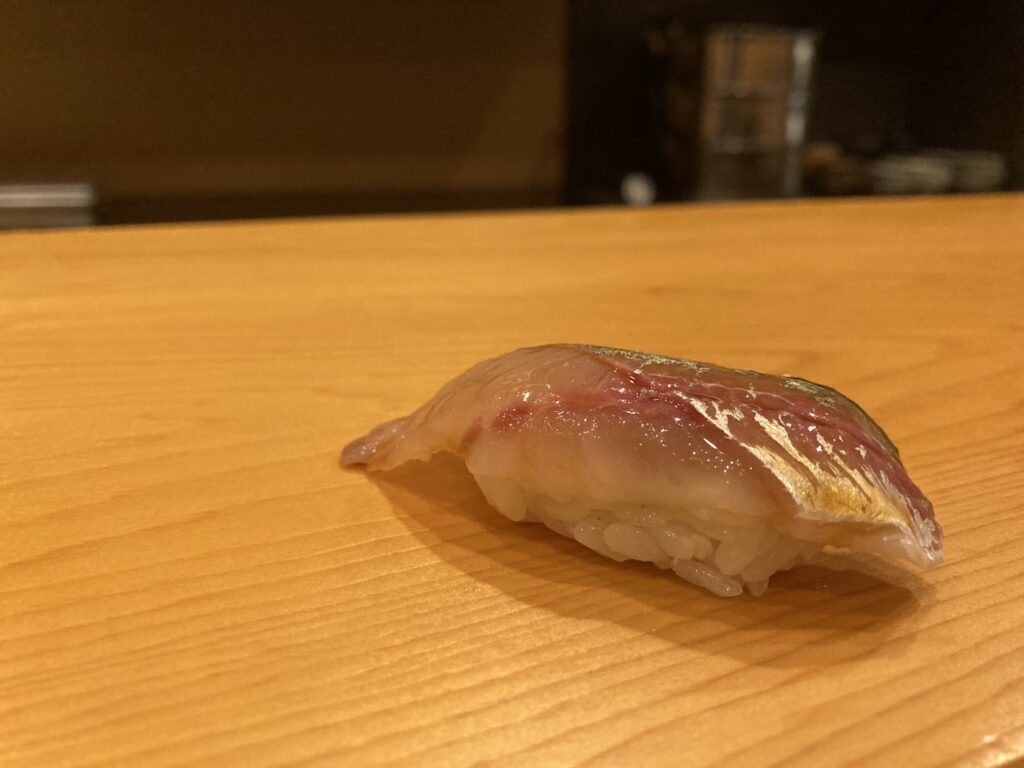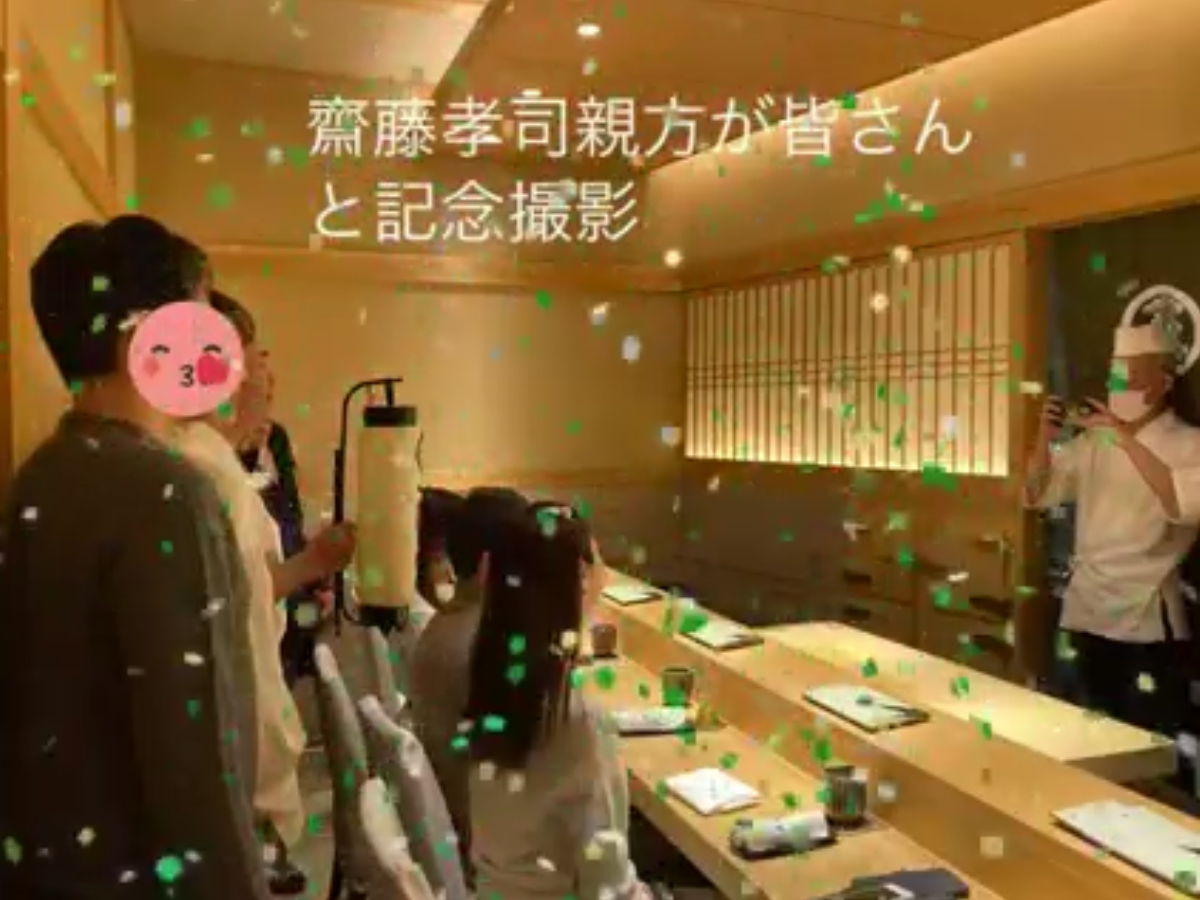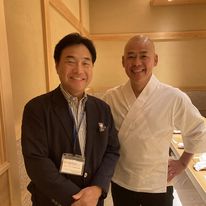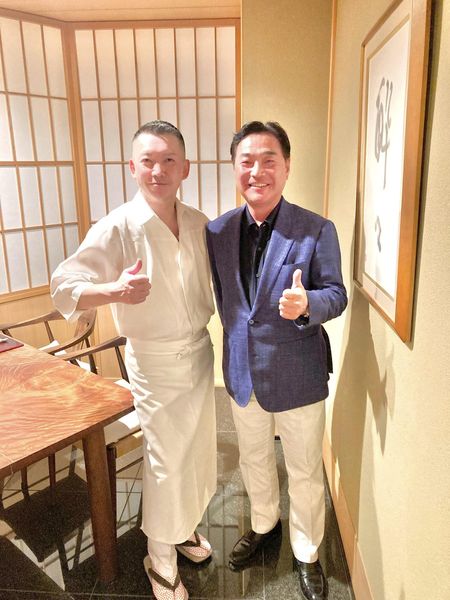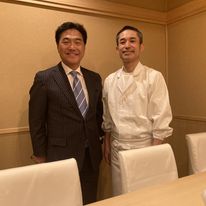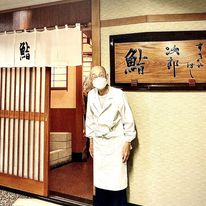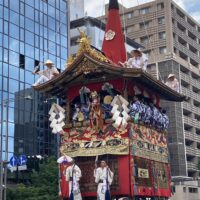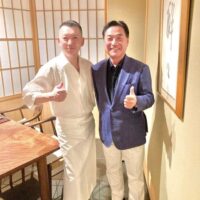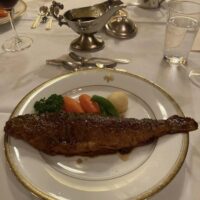There is a great sushi restaurant in Yokohama! Hamada” is great!
Today is a national holiday. I went to Sushi Hamada, a short walk from Nihon-odori Station in Yokohama.
I never thought I would be able to taste the essence of Edomae Sushi here in Yokohama.
I came to this restaurant just to taste “nigirizushi” without any snacks. That’s why I had it with tea.
The counter (tsukeban) of the restaurant is wonderfully simple. There is nothing…not even a decoration in the restaurant.
Originally, sushi was placed directly on the counter with a leaf such as Baran, but for the sake of hygiene and efficiency of washing, sushi is usually placed on a sushi board, sushi geta, etc. at sushi restaurants.
But here at Hamada, there is nothing on the counter. Sushi is served directly on the hinoki board counter.
The owner, Mr. Tsuyoshi Hamada, speaks to us in a simple and straightforward manner, saying, “Sushi work is subtraction,” “I don’t do anything unnecessary,” “There is no performance,” “I just want you to taste delicious sushi,” and “A sushi chef’s job is a steady one.
What about the red vinegared sushi?
Where did the fish come from? These questions are not worth asking.
Once you have tasted this sushi, it doesn’t matter at all!
Sushi rice, sushi broth, wasabi, nori, boiled-down soy sauce, etc., all of which work best for this particular day and time, are balanced to bring out the maximum flavor of the sushi.
This is a restaurant of an orthodox sushi chef who still steadily carries on the traditional techniques of Edo-mae-zushi, such as soy sauce for boiled vegetables, claws for conger eel broth, vinegared sushi, and kombu-zushi, all of which are the “essential work” of Edo-mae-zushi.
I felt as if I saw the essence of Edo-mae-zushi in the speed with which Hamada “Oyakata” made his sushi.
(By the way, the owner of a sushi restaurant used to be called “mister,” and now we call him “osho,” but originally he was called “oyakata.)
The rice is made at the temperature of human skin and is beautifully and elegantly shaped like a piece of jishi paper on a fan.
He grabs the rice ball around the first joints of the middle and ring fingers of his right hand, turns the sushi ball over with his left hand, attaches wasabi to the second joint and base of his left hand, puts the rice ball on top, and as soon as he makes an air hole with his thumb, he returns the sushi to his right hand and grips it. It’s just like a lightning-fast sushi!
I have never seen a sushi chef make and serve sushi this quickly!
That’s how fast he is!
It was truly a brilliantly fast job!
Tsuyoshi Hamada, the owner of Bentenzan Mika Kosushi, studied the way sushi was made by finding pictures of Suekichi Yoshino of Yoshino in Kyobashi and Eiichi Uchida, the fourth generation owner of Bentenzan Mika Kosushi in Asakusa in a used book store, and praised them for their beautiful nigiri.
His stoic attitude, in which all he thinks about is sushi, day in and day out, makes him a very likable sushi chef.
Sushi from a sushi restaurant with all the current social networking performances is honestly “tiring.
I hope that the Michelin inspectors will be more careful in their evaluation of this type of sushi.
In the near future, this will be one of those restaurants where you will not be able to get a reservation anytime soon.
Now it is still easy to get a reservation, so I would like to go out and taste this restaurant while it is still available.
I would like to thank Mr. Tsuyoshi Hamada of the wonderful Sushi Hamada that I met in Yokohama!
#Sushi Hamada #Sushi in Yokohama

